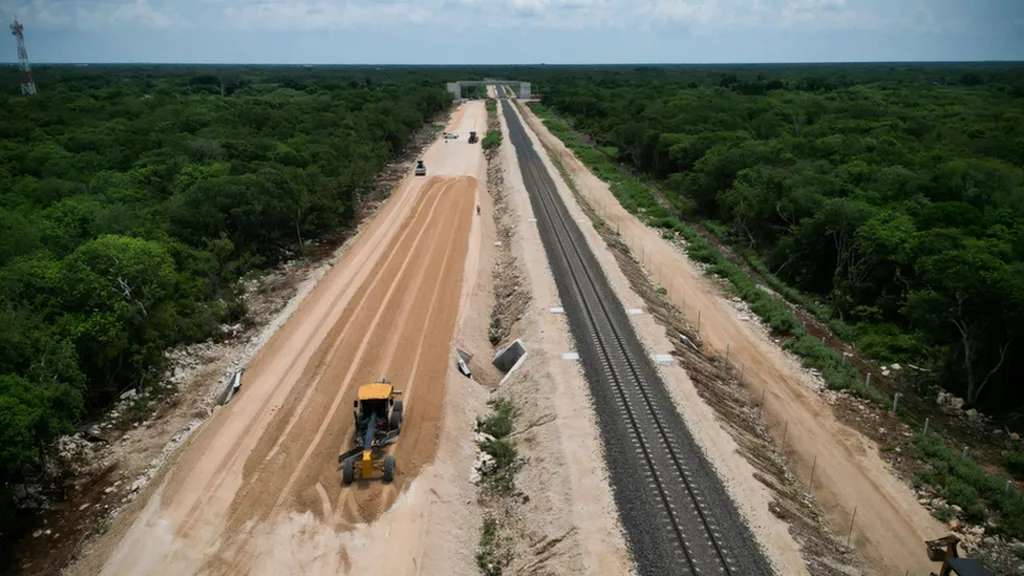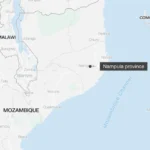To the ancient Maya, the cenotes of the Yucatán Peninsula were sacred as they believed them to be portals to the gods of the underworld.
These underground caves are also one of the most unspoilt freshwater ecosystems in Latin America.
Their tranquillity contrasts with the recent noise and construction unfolding directly above them.
The final columns and tracks are being laid for the Mexican president’s pet infrastructure project: a partially-elevated rail link called the Tren Maya (Maya Train).
The network will stretch for 1,500km (930 miles) in a vast arc from Chiapas state to the border with Belize – bringing, its supporters say, tourism and development to the jungle.
The Tren Maya has overcome numerous obstacles before its inaugural journey. It cost around $28.5bn (£22.5bn), running an estimated three times over budget.
With characteristic bravado, President Andrés Manuel López Obrador, also known as Amlo, has called it “the greatest construction project in the world”.
Environmentalists, however, are horrified.
The deforestation along the route has been catastrophic for the habitats of species like jaguars, scarlet macaws and spider monkeys, they say.
Activists from a group called “Sélvame del Tren” (a play on “selva”, Spanish for jungle, and the phrase “sálvame del tren”, meaning “save me from the train”) took us into the labyrinth of tunnels and caverns to show the impact on the region’s pristine waters.
“This is naturally filtered, purified water, you can drink it,” says cave diver Bernadette Carrión as we enter a cenote dubbed “Oppenheimer”, in reference to the surrounding devastation.
“Once it gets polluted, no life will be sustained here,” she adds.
Inside the cenote, there is a constant sound of dripping as water percolates through the rock into translucent pools below.
Above us is a yawning ceiling, covered in intricate stalactites. It is a magnificent sight, one which very few people have seen as “Oppenheimer” does not feature in any tourist trips or local cenote visits.
A constant flow of subterranean water in the Yucatán links the caves to the sea.
“So, the more we pollute the centre of the peninsula, the more we pollute the ocean. It’s already harming the coral reefs, the algae, all this oxygen production,” argues Ms Carrión.
As we wade and swim through the underground maze, renowned Mexican hydrologist Guillermo D. Christy points out the karstic topography, which is where erosion of the limestone has carved out the rivers and caves.



















